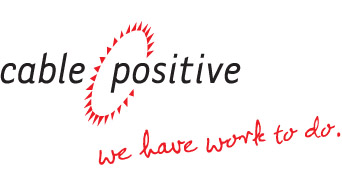By Steve Villano
One of the biggest fears in television, for an internet provider or user, or for a cell phone manufacturer or admitted text messaging addict, is that suddenly, without warning, the television screen, computer monitor or cell phone video screen goes blank. No picture, no information, nothing. Nada. Just grey snow.
When that happens now, it’s usually the result of a technical glitch, which after some tinkering, rebooting, or time on the phone with a tech rep, is repaired, and our virtual life is restored in living color. For a minute, or at most two, our visual world is put on hold, and we realize how dependent we’ve become on our devices.
But suppose, the black-out occurred in another way. Suppose that content was no longer being produced? Suppose we clicked on our flat-screen TVs, or our lap-tops, Razrs, Q’s, Blackberries and I-phones and there was nothing there? What would fill the void? Probably some new kind of content, whether it were text, still photos, or grainy home-made movies like the kind we find on You-Tube. Nature abhors a vacuum, and naturally profitable media where the best content is spun into gold, abhors it even more.
However, another, more subtle form of black-out is occurring right before our very eyes, and we’re not even noticing. Pro-bono airtime for Cable Positive’s visual messages of education and awareness about HIV/AIDS is disappearing. After 16 years of the cable industry donating more than one-billion dollars of pro-bono airtime for 30-second Cable Positive PSAs or short documentaries, the free space is getting harder to come by. It’s why Cable Positive has launched our first “Air The Spots” video and internet campaign to underscore the urgency of the need for continuing HIV/AIDS education and awareness on cable’s airways.
A menu of reasons have been given for the squeeze on public service time devoted to HIV/AIDS awareness that has distinguished the Cable industry from all others around the world as a model of corporate social responsibility on the most important health issue of our time. Those have included: competing social marketing campaigns, competing PSAs, company-produced promos fighting off other media (satellite, telephone), a growing demand for political ad space (especially in a Presidential Election year), and the increasing cost of cable’s airtime.
The airtime squeeze is on at precisely the same time that international and domestic agencies devoted to fighting AIDS are calling for more messaging on HIV/AIDS awareness, education and prevention, especially since HIV infections continue to rise and possibilities for an AIDS vaccine or cure grow dimmer. Ironically, with less time available, the quality of HIV/AIDS related programming and PSAs continues to get more powerful and more personal. Cable Positive’s 45-minute documentary on “Women & HIV,” aired on Showtime Networks in December, with copies of the highly informative show being requested by hundreds of AIDS service organizations and clinics around the country, including the National Institute of Health.
PSAs have become much more impactful, from Cable Positive’s 3-year “Join the Fight” campaign featuring an entire cast of celebrities and generating several million hits to our website, to our present extraordinarily personal “We Have Work To Do” campaign which presents a series of 30-second life stories of people living with HIV.
Yet while the content is getting stronger and more gripping, the delivery system for these life-affirming messages—with some exceptions—is getting tougher to tie together. Our “Air The Spots” messages have helped enlist messengers like Cox (Las Vegas, Virginia, Atlanta, Phoenix), Time Warner Cable (Columbus, Albany/Schenectady, NY and El Segundo, CA), Comcast (San Francisco, Arkansas), Charter (Colorado, California) Cablevision (New Jersey) CableOne (Phoenix), Bright House (St. Petersburg, FL) and Suddenlink (St. Louis). On the network side, Showtime, soapNET, hereTV!, SITV and Bloomberg have pledged to “Air The Spots.”
Unfortunately, HIV/AIDS is not just the responsibility of a few select communities or networks. In fact, in many key cable markets around the country—particularly in communities of color—HIV infection rates are rapidly increasing, and the only way to reach people is through the devices—television, computers, cell phones, iPods—which dominate their lives.
There will always be competing interests, issues and a cause, as well as corporate necessities to consider in an industry where time, literally is money. However, there have always been, and will always be competing needs. Yet, this industry has always put fighting HIV/AIDS through awareness & education at the very top of its agenda, backing its social responsibility up with $20 million in cash contributions, more than $1 billion in pro-bono airtime, extraordinary network commitments to air documentaries, and hundreds of community-based partnerships across the country between local cable systems and local AIDS service organization.
The cable industry’s commitment to Cable Positive and to fighting HIV/AIDS is an investment made in time, talent and money, a model of industry-wide corporate social responsibility for the entire world to follow. Our powerfully successful “Project Home” volunteer project in New Orleans demonstrated clearly how so many industry leaders and activists – working shoulder to shoulder – can do so much good…

